Lucien Petit is a sculptor. Along with architects, he shares the professional ambition to build, bringing hospital forms out of the ground. His own forms rise up with no agenda to match. They stand, sometimes taking their lines from their habitat, no matter how rustic it may be. So they harbour a breath. Each time, an idea finds refuge in a space, lodging itself inside. Well-built statues provide asylum. Like a temple, every work functions as a tangible receptacle to contain that which is not. The artist creates a fixed envelope to accommodate the moving object. Austere silhouettes and rough surfaces assert the authority of stability, fixed with poise on a plane and emphasizing its perpendiculars. On the promontory of ostentation, verticals humbly parade upright, their sturdiness bearing witness to the essential rigour.
Lucien Petit is a sculptor. His career reflects his familiarity with ceramics, and he works on its technical and artistic potential as much as he embraces its philosophy. Of course, firing is the thing that will always lend the final touch to his pieces, which he does not necessarily model using his own hands. By using templates, it is possible to obtain pieces without directly modelling the clay. Unlike using a mould, a physical imprint remains. The aspect of manufacture must strike the right balance to maintain the material in a state somewhere between reflection and spontaneity. It is important to be allowed to fumble around, even if it means having to put your doubts to one side. The artist has trained in the production of industrial porcelain and experimented with various clays according to the wide range of ways in which they could be treated. These days he mainly works with stoneware in his studio near La Borne, where he fires his pieces in a wood-fired kiln. His undeniable skill is clear to see from the malleable lump of clay in front of him to what leaves his kiln.
Lucien Petit is a sculptor. His vocabulary resuscitates the modernity of the past century’s masters. Geometry determines the outline of his shapes, fuelled both by the radicalism of the avant-garde and by the violence of brutalism. And just like these recent references, it is about digging even deeper to come close as possible to the indestructible lines of ancestral cultures. His solemn figures reverberate with certain secular cults, the rituals of which impose immaculate arrangements. This kind of ceremony directs the organisation of his works in space, so they can appear in family groups that seem to be moving as we move around them, small, medium and large, seeming to change in size according to the way we circulate around them. This kind of kinetic strategy in the arrangement of things needs to be strictly orchestrated.
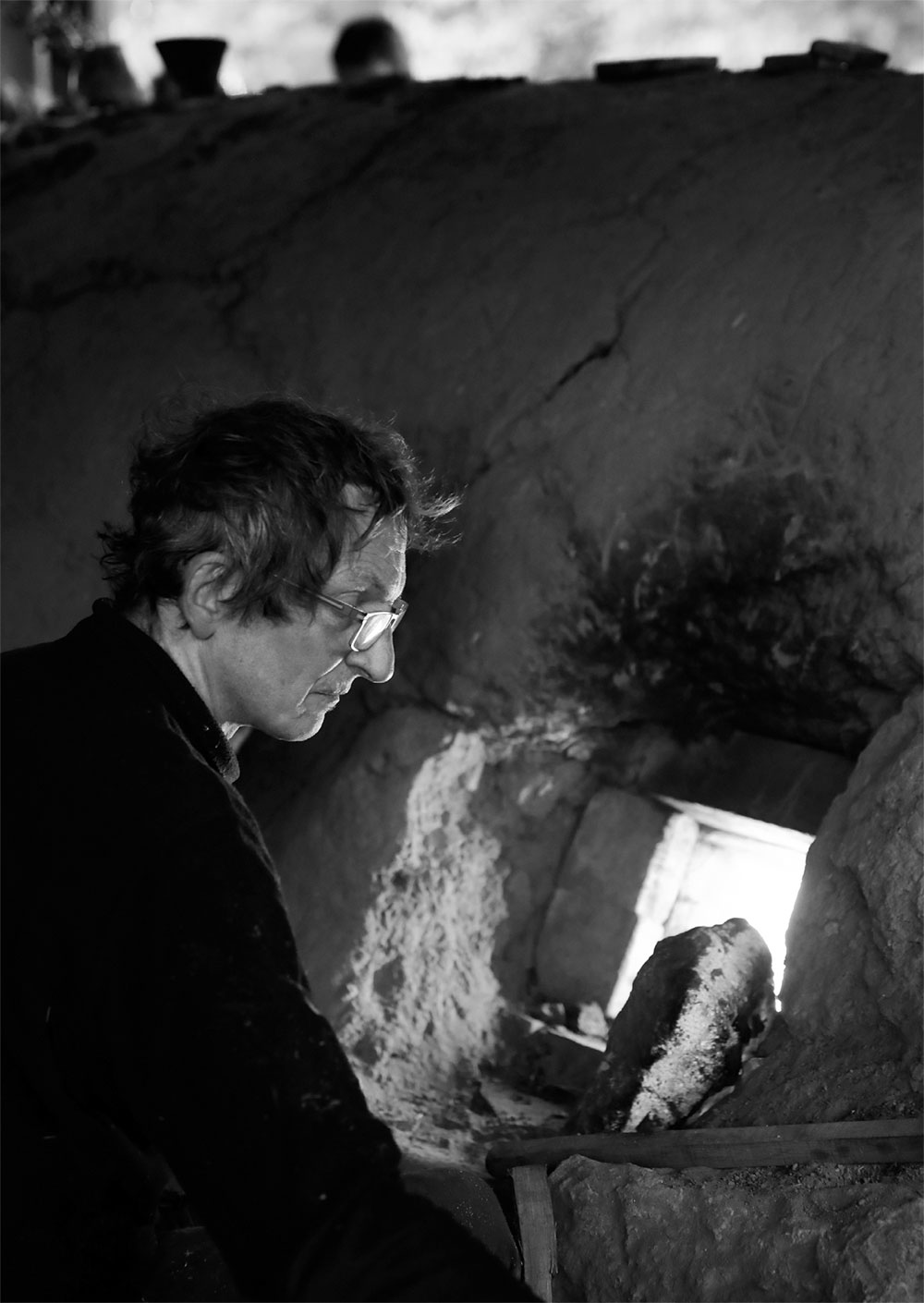
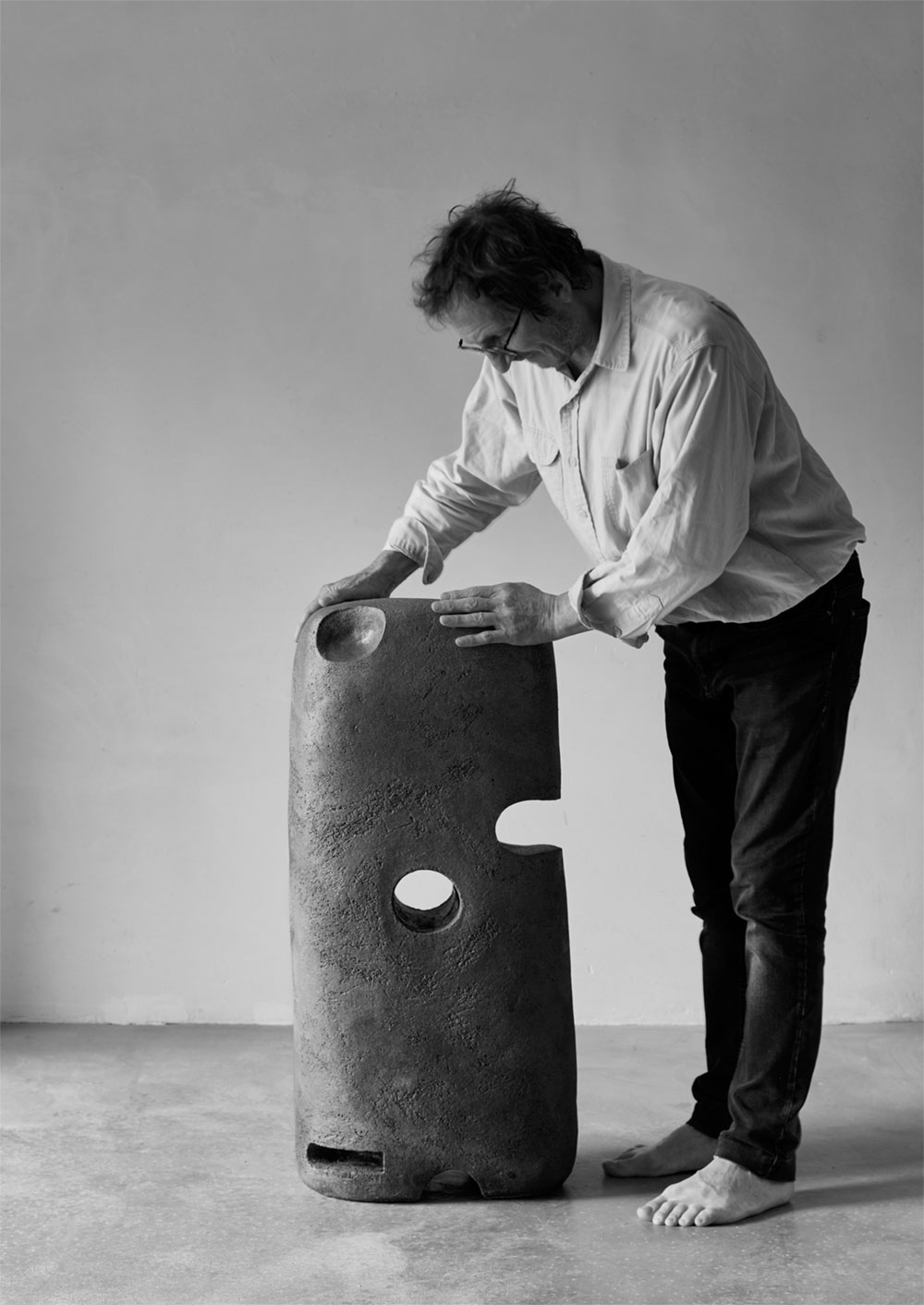
Lucien Petit is a sculptor. His sensitivity has been forged through his contact with a lineage of personalities, whether they have guided his own approach or benefited from his expertise, with no contradiction, because it works both ways; through the artist’s biography, we perceive the impact of the transmission of knowledge, through experience. He receives it. He gives it. The humanity throughout the work is manifest, embodied in the companionship which is gauged by work, sometimes underpinned by friendship. Along the way, in the course of encounters conversations are nurtured. Some of these will be lasting. A concern for mineral time, which extends over time beyond the personal dimension, can be read even in the appearance of this output with its textures that evoke the signs of erosion. Light, one of the most immaterial of the forces at work, touches everything with its voluptuous caress.
Lucien Petit is a sculptor. His impetus demands acrobatic skills at every level. His work, venturing between the mechanical and the sensitive, has now reached a key moment, with the monograph “Le geste sur pied” (“The standing movement”) setting out the essential elements of his work. Five years of research already reached a significant milestone with the establishment of his new workshop in Boisbelle in late 2014. The event marks a turning point from appraisal to new prospects. The artist will soon be building his own kiln, which will already allow him to envisage larger scale pieces. Superlatives can be foreseen. A sense of flexibility is coming to the fore. Pedestals are towering. Movement circulates. Its confidences evoke challenges and uncertainties, power and vulnerability. There is always this balance, which is obvious and needs to be maintained. Then the moods sway, reconciling empty and full, reinforcing the primordial balance between rectitude and sensuality.
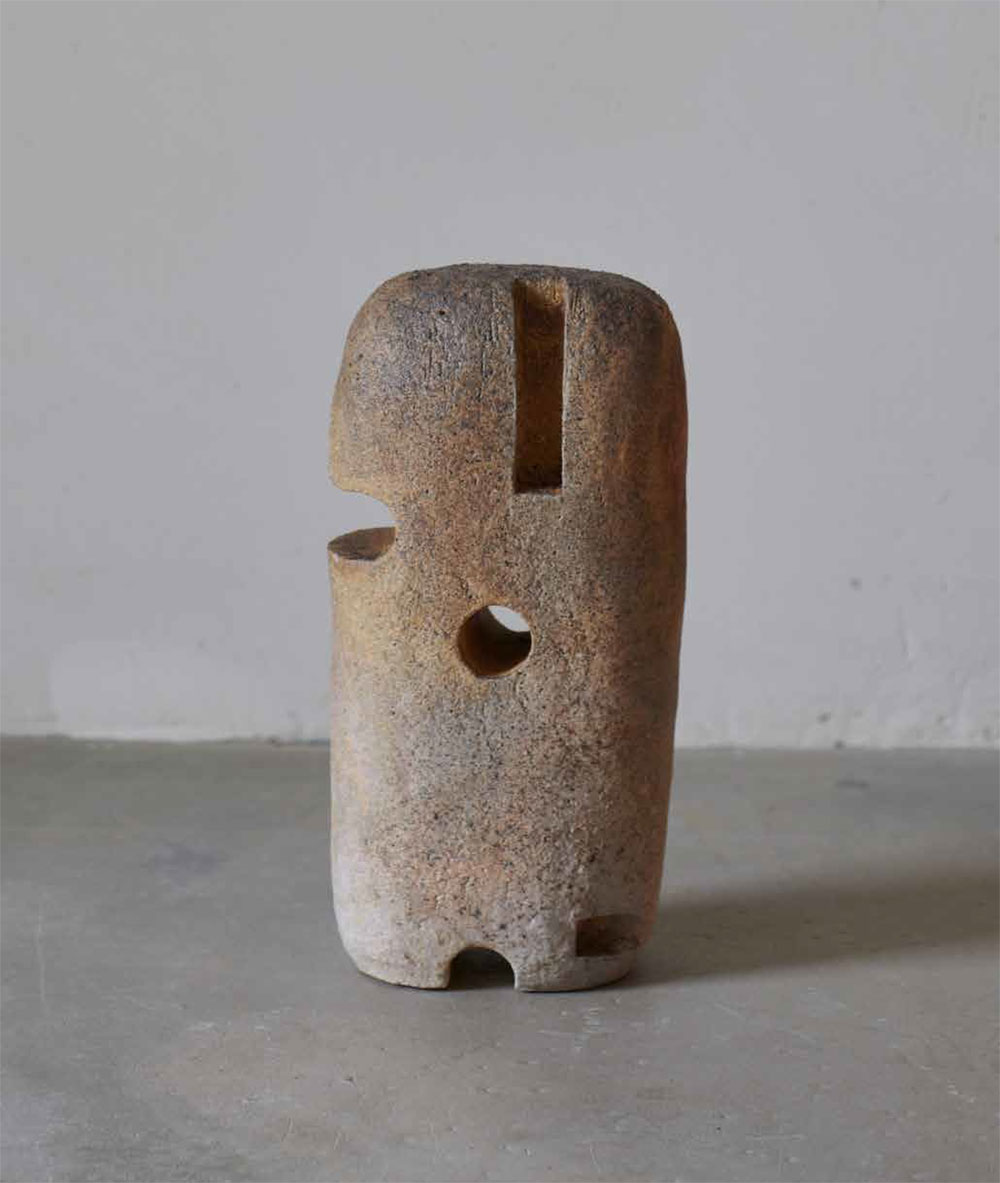
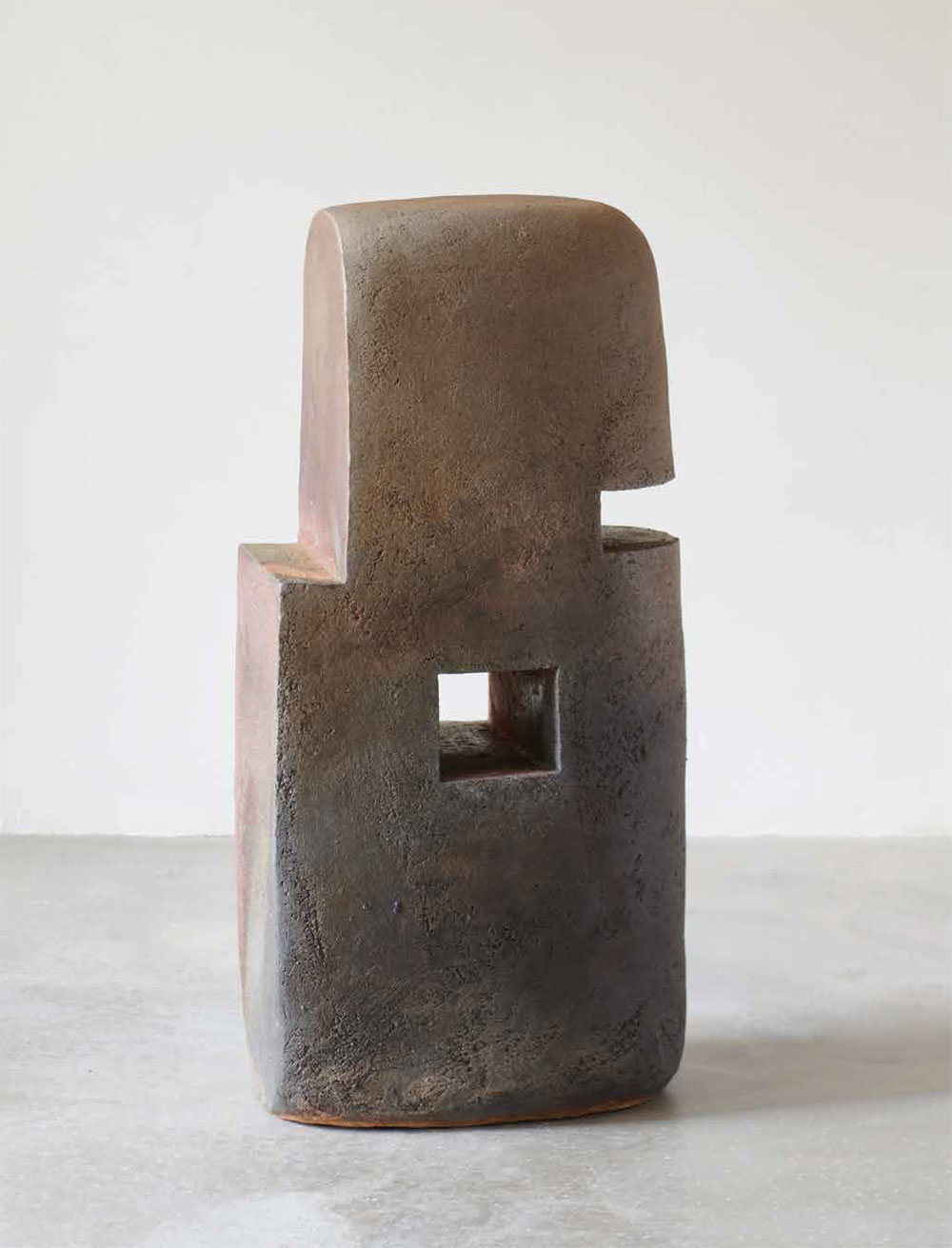
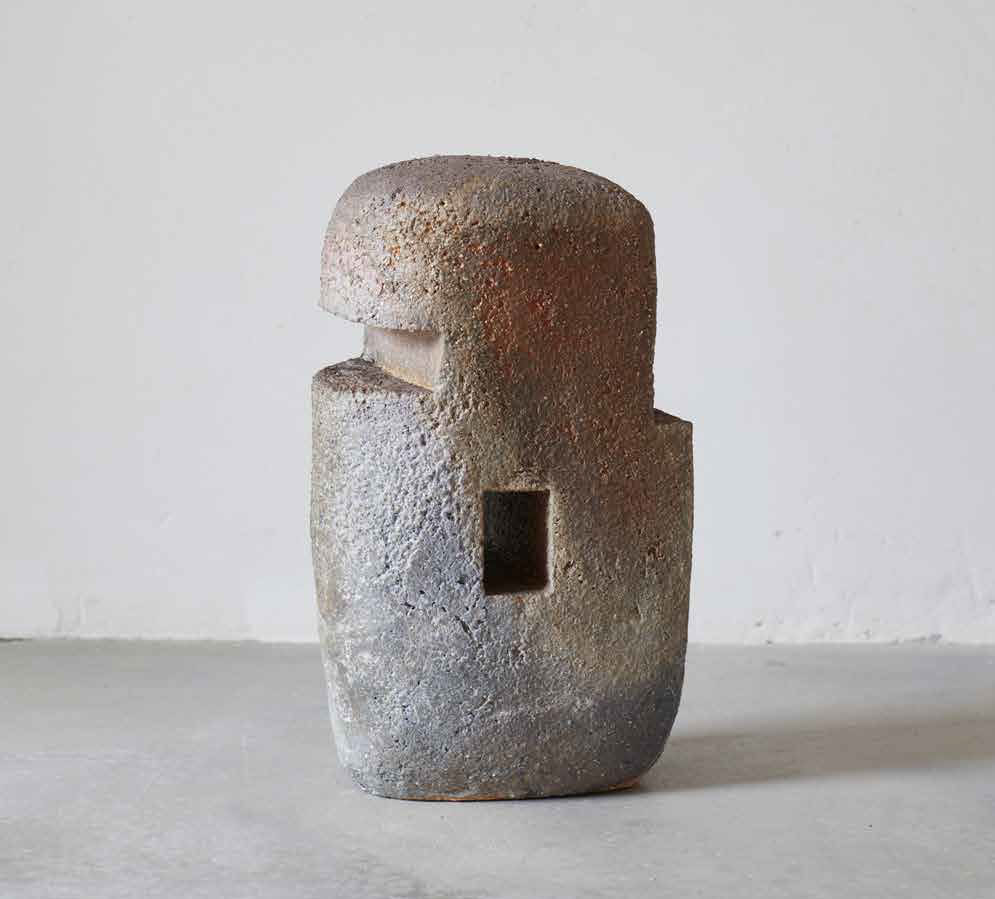
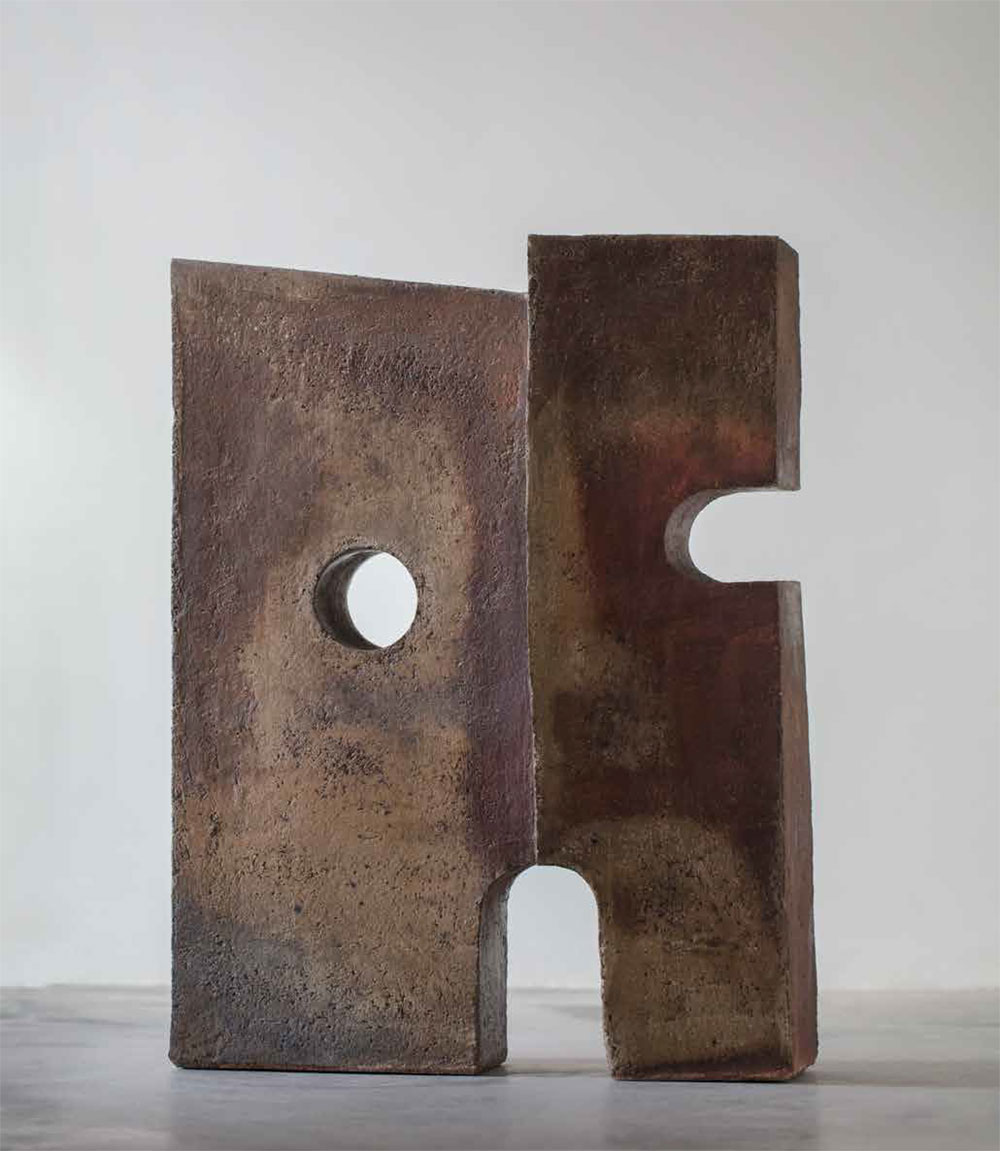
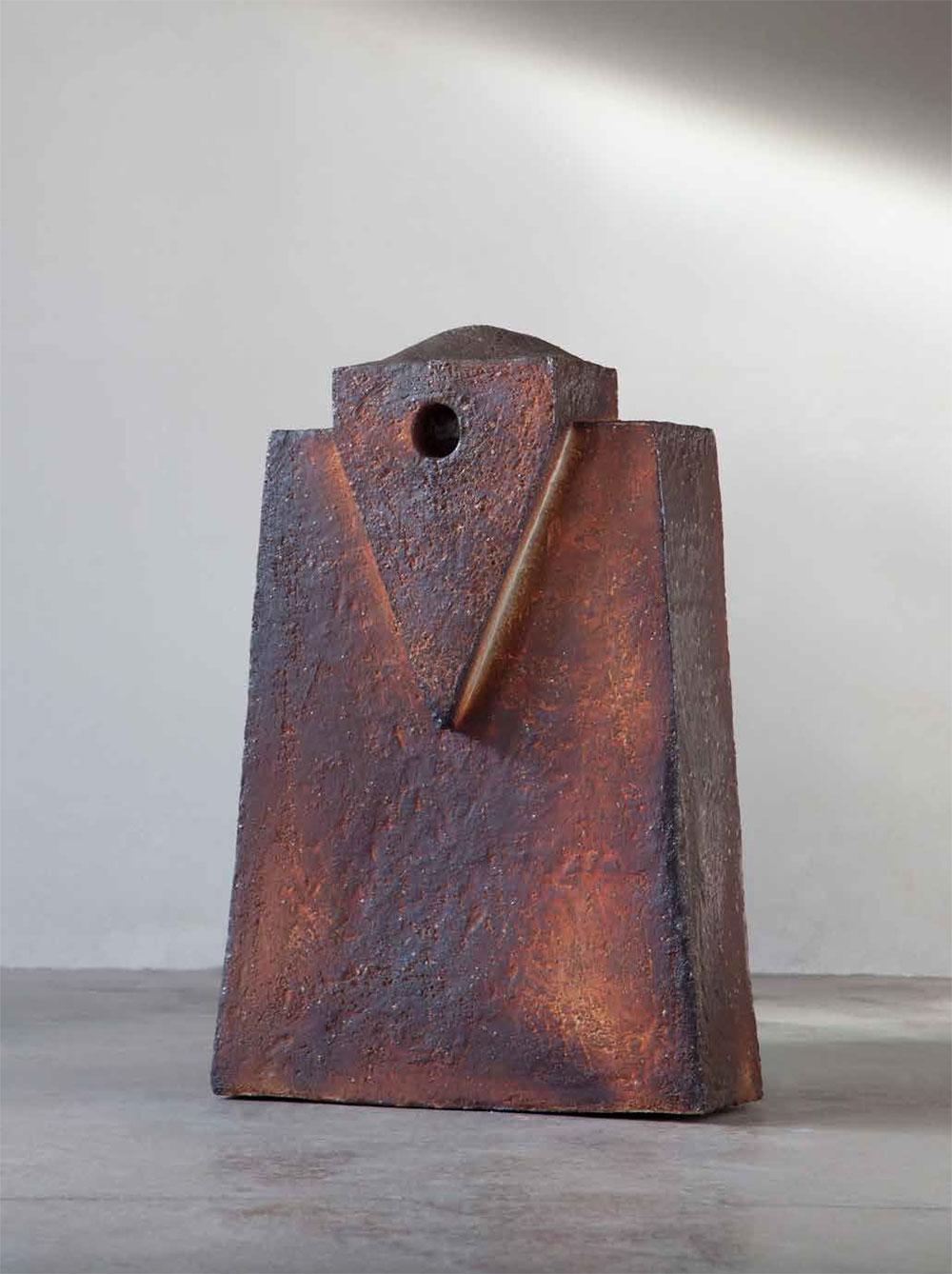
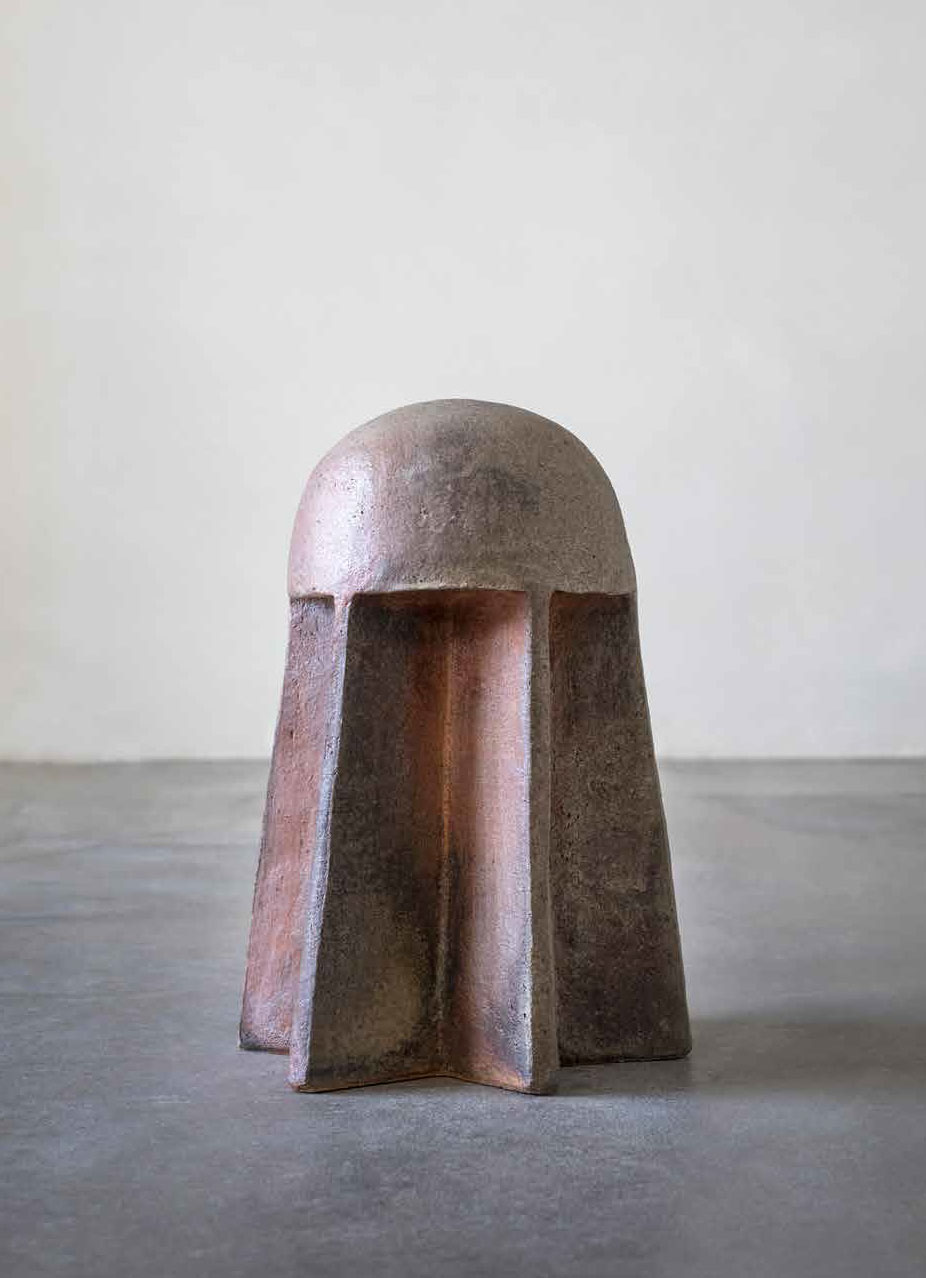
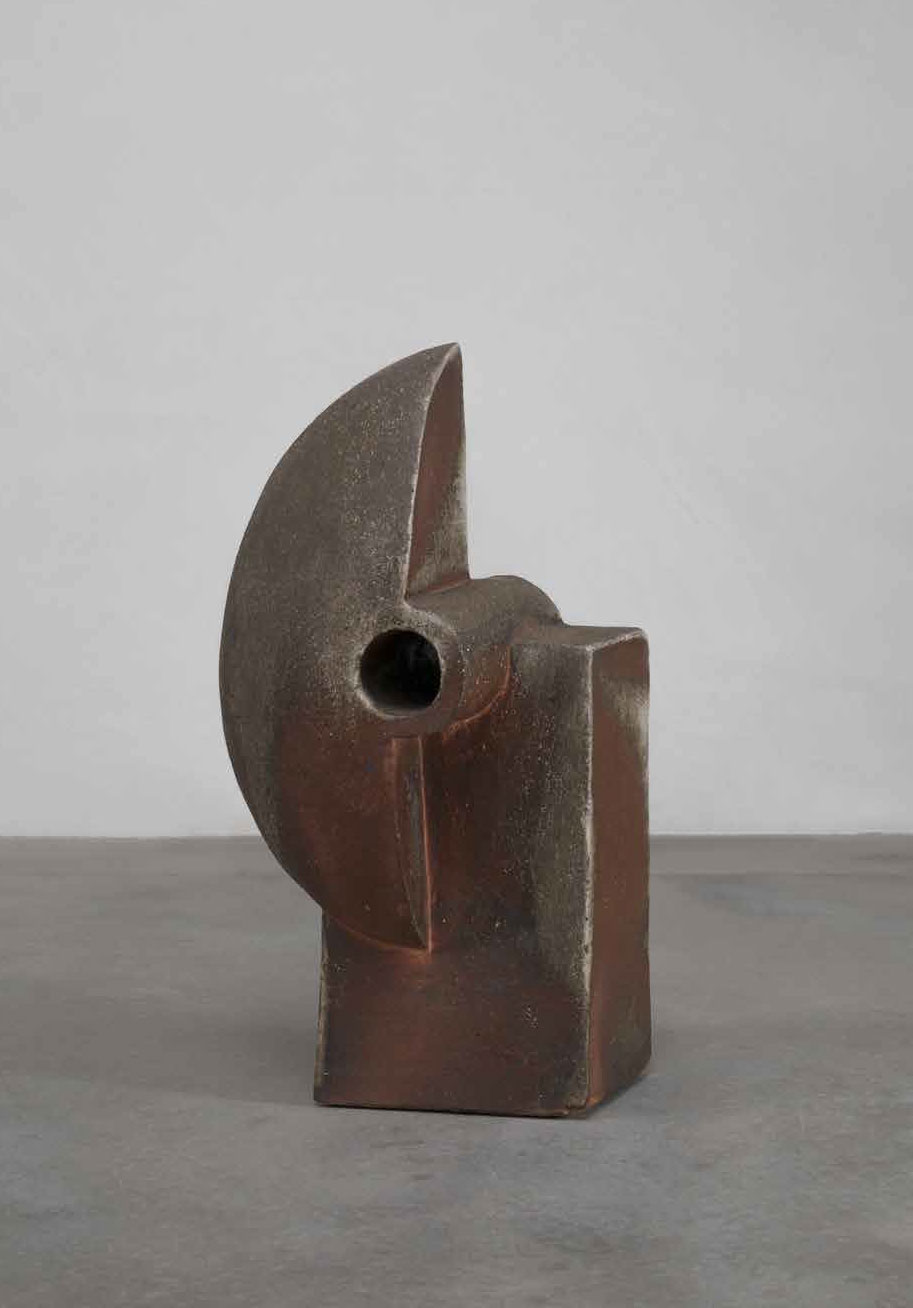
Texts: Joël Riff. Exhibition curator for Moly-Sabata / Fondation Albert Gleizes, he contributes to the Revue de la Céramique et du Verre and to the catalogues of the Salon de Montrouge, and regularly responds to text commissions. www.joelriff.wordpress.com
Photos: Jean Frémiot, Sylvain Deleu, Michael Francken
Woodfiring.net thanks Lucien Petit and Joël Riff for their collaboration in the preparation of this article.
Text and photos from the catalogue edited by Modern Shapes Gallery.